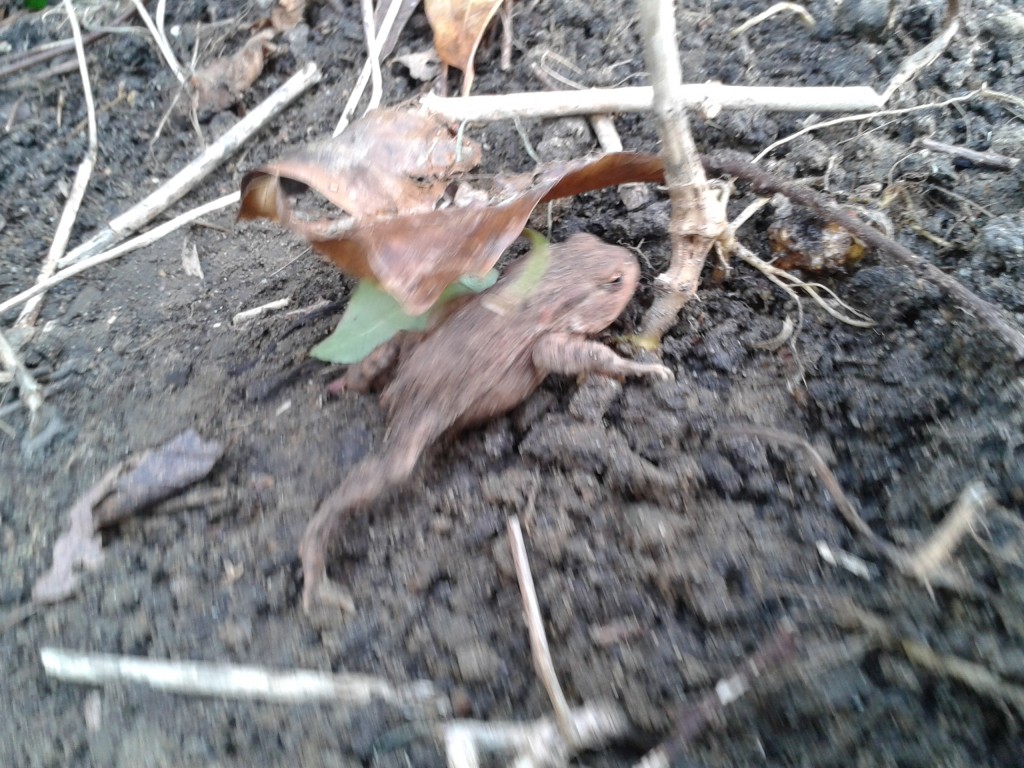Down at the Gunnersbury Triangle, I pulled out a quantity of Ivy that had spread across a considerable area of former meadow. We know it was meadow as it is shown as such on the old reserve map from 30 years ago, and – if proof were needed –the area is covered in old anthills: the yellow ant makes its hills in open grassland.
Anyway, I pulled out armfuls of the ivy, along with brambles and a few nettles, and was rewarded by the sight of a new area ready to grow into flowery meadow, if we can keep it reasonably open and free of brambles.
I disturbed a toad that was sheltering somewhere under the ivy, and took a break to photograph it. The static shots were nice and sharp, but I found I much preferred this action shot as the toad scrambles up a bank. Yes, that’s an ivy stem that I hadn’t yet pulled out.

